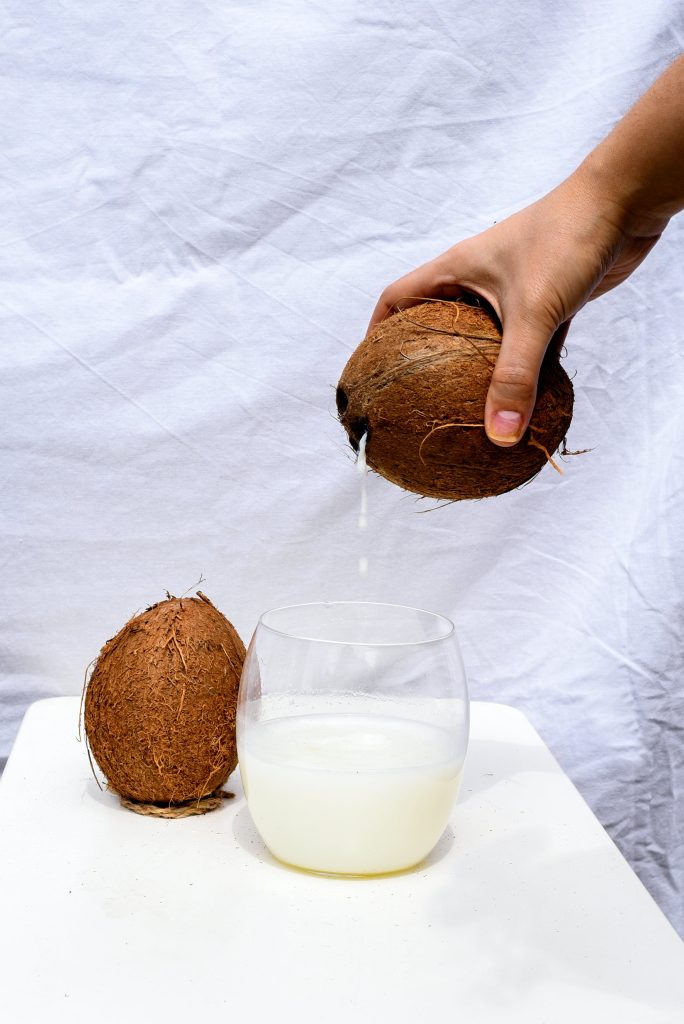When it comes to ensuring the safety and purity of the water we consume, finding the most effective water filtration method is of utmost importance. With numerous options available in the market, it can be overwhelming to determine which method is truly the best. In this article, we will highlight different water filtration methods, exploring their effectiveness and helping you make an informed decision about the most suitable one for your needs. Whether you’re concerned about contaminants, taste, or overall water quality, we’ve got you covered. So let’s dive in and discover the most effective water filtration method for you.
Understanding Water Filtration
Water filtration is an essential process that helps remove impurities and contaminants from water, making it safe for consumption and various other purposes. Depending on the specific needs and preferences, there are several filtration methods available for ensuring clean and fresh water. In this article, we will explore different water filtration methods, their functioning, advantages, and limitations, to help you make an informed decision regarding the most effective method for your needs.
Why Water Filtration is Necessary
Water is an indispensable resource for humans, and ensuring its cleanliness is crucial for our health and well-being. Unfortunately, water from various sources can contain a wide range of impurities and contaminants that can be harmful if consumed or used directly. Some common contaminants found in water include bacteria, viruses, heavy metals, chemicals, pesticides, sediments, and chlorine. Water filtration plays a vital role in removing these contaminants, ensuring clean and safe water for drinking, cooking, bathing, and other everyday activities.
Common Contaminants in Water
Before delving into the details of different water filtration methods, it’s important to understand the common contaminants that these methods aim to eliminate. Bacteria and viruses are microscopic organisms that can cause serious illnesses, especially if the water source is contaminated with fecal matter. Heavy metals like lead, mercury, and arsenic can enter the water supply through industrial waste, corroded pipes, or natural deposits. Chemicals and pesticides can contaminate water sources, affecting its quality and safety. Sediments, such as sand, rust, or silt, can cause cloudiness and affect the taste and odor of water. Chlorine, though used as a disinfectant, can leave an unpleasant taste and smell.
Activated Carbon Filters
Activated carbon filters are one of the most commonly used filtration methods, known for their effectiveness in removing a wide range of contaminants. These filters function by adsorption, where contaminants adhere to the activated carbon surface inside the filter.
How Activated Carbon Filters Work
The activated carbon used in these filters has a large surface area with countless microscopic pores. As water passes through the filter, organic compounds, chlorine, and other contaminants get trapped within the pores of the activated carbon. This process removes impurities and improves the taste and odor of water. Additionally, activated carbon filters can also remove certain volatile organic compounds (VOCs), heavy metals, and some pesticides.
Benefits and Limitations of Activated Carbon Filters
Activated carbon filters offer several advantages. Firstly, they effectively remove chlorine and its by-products, which can adversely affect the taste and smell of water. They also eliminate certain organic compounds, improving the overall quality of water. Another benefit is their affordability and ease of use. Activated carbon filters are readily available in various forms, such as faucet attachments, countertop units, and pitcher filters, making them convenient for different needs.
However, it is important to note that activated carbon filters may not be effective against all contaminants. They do not remove dissolved inorganic substances, such as nitrates, fluoride, or heavy metals. Additionally, these filters require regular replacement to maintain their effectiveness and prevent bacterial growth within the carbon. Despite these limitations, activated carbon filters are still a popular choice for household water filtration due to their affordability and ability to improve taste and odor.

Reverse Osmosis
Reverse osmosis is a highly efficient water filtration method that uses a semi-permeable membrane to remove impurities from water. It is known for its ability to eliminate a wide range of contaminants, making it popular for both residential and commercial use.
What is Reverse Osmosis?
Reverse osmosis works by applying pressure to the water, forcing it through a membrane that allows only pure water molecules to pass. This membrane has tiny pores that can filter out dissolved solids, such as salts, minerals, bacteria, viruses, and organic compounds. The impurities are then flushed away, leaving behind clean, purified water.
Advantages and Disadvantages of Reverse Osmosis
Reverse osmosis offers several advantages. Firstly, it can effectively remove a wide range of contaminants, including heavy metals, bacteria, viruses, pesticides, and dissolved solids, ensuring the purity of the water. Additionally, reverse osmosis systems often have multiple filtration stages, further enhancing the water quality. Another advantage is that reverse osmosis does not require electricity to operate, making it energy-efficient.
Nevertheless, there are some disadvantages to consider. The process of reverse osmosis produces a significant amount of wastewater, which can be a concern in regions with water scarcity. Additionally, the filtration process removes not only contaminants but also beneficial minerals from the water. To address this, some reverse osmosis systems include remineralization stages to restore essential minerals. Furthermore, reverse osmosis systems can be relatively expensive to purchase and maintain, requiring regular filter replacements and professional servicing.
Distillation
Distillation is a traditional method of water filtration that has been used for centuries to obtain pure water. The process involves boiling water and collecting the evaporated steam, which is then condensed back into liquid form, leaving behind impurities.
Process of Distillation
In the distillation process, water is heated to boiling point, converting it into steam. The steam rises and is collected in a separate container, leaving behind impurities, such as bacteria, viruses, dissolved solids, heavy metals, and chemicals. The collected steam is then cooled and condensed back into pure liquid water.
Strengths and Weaknesses of Distillation
Distillation offers several strengths as a water filtration method. Firstly, it can effectively eliminate a wide range of contaminants, including bacteria, viruses, heavy metals, and dissolved solids. Distilled water is generally considered safe for drinking and other purposes. Distillers also have the advantage of being able to sterilize the water, as the boiling process kills most microorganisms.
However, there are some notable weaknesses of distillation. Firstly, the distillation process is relatively slow and requires a significant amount of energy to raise the water to its boiling point. Additionally, the process removes not only contaminants but also naturally occurring minerals from the water. As a result, distilled water may lack essential minerals that are beneficial for human health. Furthermore, the initial investment cost for a distillation system can be relatively high.

Ultraviolet (UV) Disinfection
UV disinfection is a chemical-free water filtration method that utilizes ultraviolet light to destroy harmful microorganisms, making it a popular choice for treating water at both residential and commercial scales.
Principle of UV Disinfection
UV disinfection works by exposing water to ultraviolet light, which damages the DNA of microorganisms, rendering them unable to reproduce and rendering them harmless. As water flows through a UV sterilizer, it passes by a UV lamp that emits wavelengths specifically designed to target and kill bacteria, viruses, and other pathogens.
Pros and Cons of UV Disinfection
UV disinfection offers several advantages. Firstly, it is highly effective in killing a wide range of microorganisms, including bacteria, viruses, and parasites. The process does not require the use of chemicals, making it safe and environmentally friendly. UV disinfection also does not alter the taste, odor, or color of the water. Additionally, UV systems are relatively low-maintenance, only requiring periodic lamp replacement.
However, UV disinfection has its limitations. It does not remove dissolved impurities or particles from the water, focusing solely on disinfection. Therefore, it is often used in conjunction with other filtration methods to ensure comprehensive water treatment. Moreover, UV disinfection requires a power source to operate, making it less suitable for areas with unreliable electricity.
Ceramic Filters
Ceramic filters are a cost-effective water filtration method that uses porous ceramic material to trap and remove contaminants from water. They are commonly used in portable water filters and can effectively remove bacteria, cysts, sediments, and other particles.
Functioning of Ceramic Filters
Ceramic filters work by using the microscopic pores in the ceramic material to physically block contaminants from passing through. The porous structure of the ceramic allows water to flow freely while trapping harmful substances. As water passes through the ceramic filter, bacteria, cysts, sediments, and other particles get trapped on its surface, resulting in cleaner water.
Positive and Negative Aspects of Ceramic Filters
Ceramic filters offer several positive aspects. Firstly, they are highly effective in removing bacteria and cysts, ensuring the safety of the water. They can also help improve water clarity by removing sediments and particles that cause turbidity. Ceramic filters are usually inexpensive and have a longer lifespan compared to other filtration methods. They are easy to clean and maintain, making them ideal for portable filters.
However, ceramic filters may not be suitable for all water sources. They have limitations in removing dissolved substances, heavy metals, or chemicals. Additionally, ceramic filters can be fragile and prone to cracks if mishandled or dropped. Regular cleaning is necessary to maintain their effectiveness, and precautions should be taken to avoid any damage to the ceramic element.

Ion Exchange Filters
Ion exchange filters are a type of water filtration method that helps remove harmful ions, such as heavy metals and certain minerals, from water. They work by exchanging these ions with less harmful ions, providing cleaner and safer water.
Mechanism of Ion Exchange Filters
Ion exchange filters use a material called an ion exchange resin to facilitate the removal of undesirable ions from water. This resin consists of tiny, negatively charged beads that attract positively charged ions. When water passes through the filter, the resin attracts and captures ions like calcium, magnesium, lead, or other heavy metals, releasing harmless ions, such as sodium or hydrogen into the water.
Values and Deficits of Ion Exchange Filters
Ion exchange filters offer several values as a water filtration method. Firstly, they effectively remove heavy metals and dissolved mineral ions, improving the overall quality of the water. They can also help prevent lime scale build-up in appliances and plumbing systems. Ion exchange filters are generally easy to install and can be used in conjunction with other filtration methods for comprehensive water treatment.
However, there are a few deficits to consider when using ion exchange filters. They do not remove bacteria, viruses, or other microorganisms from the water, so additional disinfection may be required. Ion exchange filters can also increase the sodium content in water due to the release of sodium ions. Regular maintenance, such as periodically regenerating or replacing the resin, is necessary to maintain the filter’s effectiveness.
Mechanical Filters
Mechanical filters, also known as sediment filters, are a basic yet effective method of removing large particles, sediments, debris, and other visible contaminants from water. They provide the initial line of defense by preventing these particles from entering the filtration system.
Operation of Mechanical Filters
Mechanical filters are typically made from tightly woven fibers or screens that act as a physical barrier, preventing larger particles from passing through. As water flows through the filter, it forces the suspended particles to be trapped within the filter media. This process effectively removes sediment, rust, sand, silt, and other visible impurities from the water.
Attributes and Drawbacks of Mechanical Filters
Mechanical filters offer several attributes that make them a useful water filtration option. Firstly, they are cost-effective and require minimal maintenance. They provide immediate filtration by capturing larger particles, protecting downstream filtration stages. Mechanical filters also help prevent clogging of other filtration systems and extend their lifespan.
However, mechanical filters have a few drawbacks. They are only capable of removing visible particles and sediments, and they are not effective against dissolved substances or microorganisms. Since mechanical filters capture particles and debris, regular cleaning or replacement is necessary to prevent clogging and maintain their efficiency. Additionally, filter media with smaller pores can have a lower flow rate, affecting the water pressure in the system.
Comparison of Different Filtration Methods
It is essential to compare and evaluate the effectiveness of different filtration methods in removing contaminants to determine the most suitable option for your specific needs.
Effectiveness in Removing Contaminants
When it comes to removing contaminants, each filtration method has its strengths. Reverse osmosis and distillation are highly effective in eliminating a wide range of contaminants, including heavy metals, dissolved solids, bacteria, viruses, and chemicals. Activated carbon filters are proficient at reducing chlorine, organic compounds, and some heavy metals. UV disinfection is highly successful in killing bacteria, viruses, and parasites. Ceramic filters excel at removing bacteria, cysts, and sediment particles. Ion exchange filters target and remove heavy metals and certain minerals.
Cost-effectiveness
The cost-effectiveness of different filtration methods varies depending on various factors, including initial investment, maintenance, filter replacement frequency, and energy consumption. Activated carbon filters and ceramic filters are generally more affordable options, while reverse osmosis and distillation systems tend to have higher upfront costs. Regular filter replacements for activated carbon and ceramic filters are relatively low-cost. However, reverse osmosis systems can require more frequent filter replacements, and distillation systems may have higher energy consumption due to the boiling process.
Ease of Use and Maintenance
Ease of use and maintenance is an important consideration when selecting a water filtration method. Activated carbon and ceramic filters are typically straightforward to install and require minimal maintenance. Reverse osmosis and distillation systems may have more complex installation processes and periodic maintenance requirements. UV disinfection systems are generally easy to use, but lamp replacements should be done as instructed by the manufacturer. Mechanical filters are easy to install and maintain but may require frequent cleaning or replacement due to debris accumulation.
Choosing the Right Filtration Method
Selecting the right water filtration method involves considering various factors to ensure it meets your specific requirements and preferences.
Factors in Selecting a Filter
When selecting a filter, consider factors like the quality of your water source, the specific contaminants present, and the desired water treatment goals. Understanding the common contaminants found in your water can help guide you towards the most effective filtration method. Additionally, consider factors such as the flow rate, filter lifespan, installation requirements, and space availability to choose a filter that suits your lifestyle and circumstances.
Importance of Water Quality Testing
Conducting water quality testing is crucial in determining the contaminants present in your water and guiding your filtration system selection. Professional testing can provide accurate and comprehensive results, alerting you to any potential health risks associated with your water source. Alternatively, there are various at-home water testing kits available that can provide basic information about the water quality.
Consideration of Water Usage and Needs
The specific usage and needs also play a role in selecting a filtration method. If you primarily need drinking water purification, a smaller-scale filter, such as a countertop unit or a pitcher filter, may suffice. However, if you require whole-house water treatment or have a large water consumption, a more comprehensive system, such as reverse osmosis or UV disinfection, may be necessary. Considering factors like water usage patterns, budget, and environmental concerns will help determine the most suitable filtration method for your needs.
In conclusion, having an understanding of the different water filtration methods, their functioning, advantages, and limitations, is crucial in selecting the most effective method for your specific needs. Whether you choose activated carbon filters, reverse osmosis, distillation, UV disinfection, ceramic filters, ion exchange filters, or mechanical filters, each method offers distinct benefits and limitations. By evaluating factors such as effectiveness, cost, ease of use, and water quality, you can make an informed decision to ensure clean, safe, and refreshing water for you and your loved ones.


